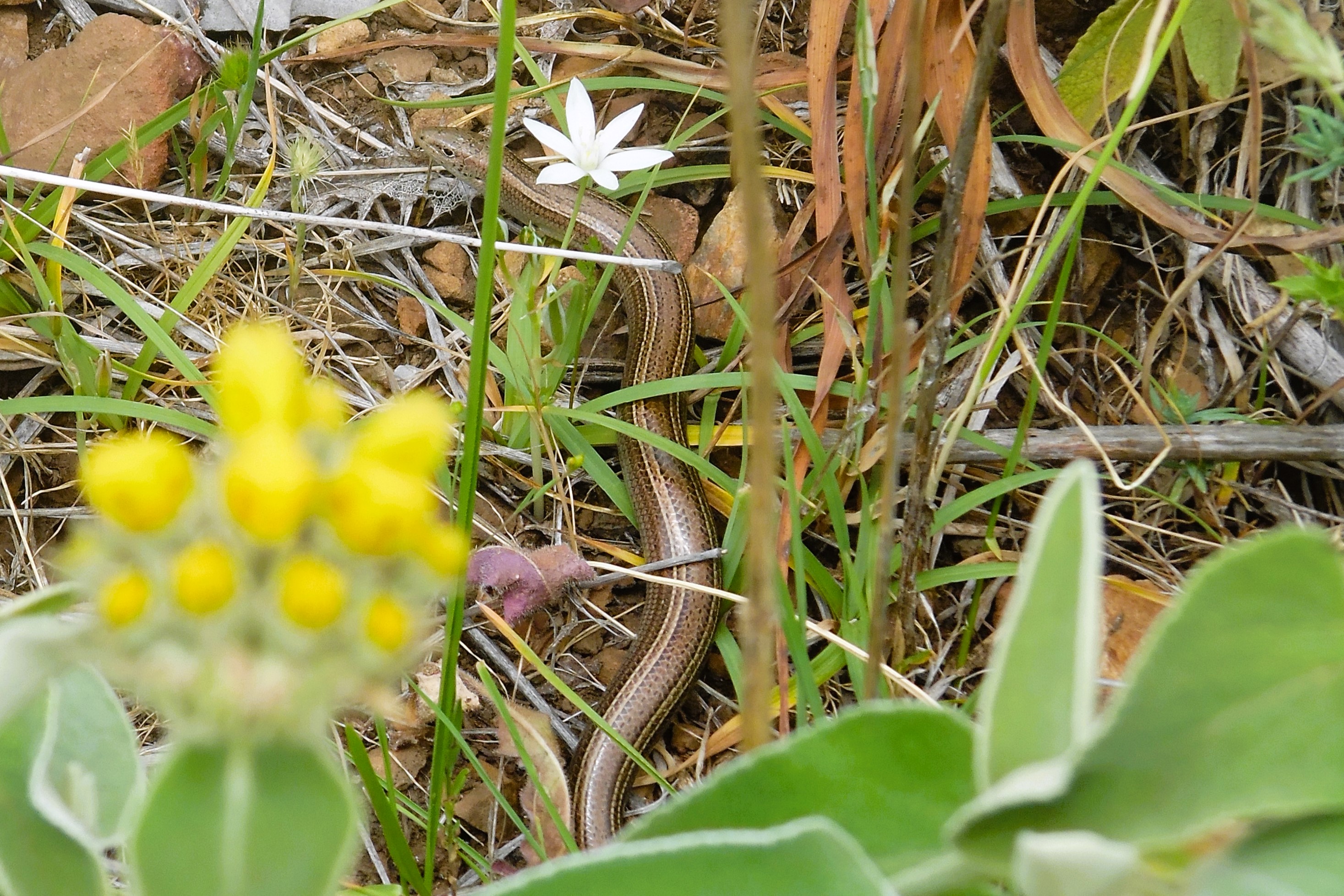Chalcides chalcides












Reptilia → Squamata → Scincidae → Chalcides → Chalcides chalcides
Mamàlua
The Common Three-toed Skink ( Chalcides chalcides ) is a lizard with a long, serpentine body that can reach up to 20 in (50 cm) in total length, although most individuals range between 12 and 14 in (30 and 35 cm).
The thin tail makes up about half of the total length. The head is small, pointed, and not well distinguished from the rest of the body. The eyes are small, elliptical, with movable eyelids, and two tympanic membranes are clearly visible at the sides of the head.
The back displays colors varying from brown to gray, sometimes with greenish hues or metallic reflections, often adorned by 9-13 thin dark longitudinal stripes, though these may be absent in some individuals.
It has four very reduced limbs, each with three toes, unsuitable for walking: its typical movement is by creeping, undulating along the ground like a snake. Its secretive behavior and camouflaged coloration make the skink difficult to spot, especially in dense grassy vegetation.
This species has a Mediterranean distribution, from the Iberian Peninsula to Italy, including the major islands and northwestern Africa.
In Italy, the skink is mostly found in coastal areas and the warmer, lowland zones.
In the province of Savona its presence is mainly detected in the eastern coastal strip and in Val Bormida, from sea level up to about 1,600 ft (500 m).
In western Liguria, the species thrives in meadows, cultivated fields, and along the edges of wetlands, provided there is adequate grassy cover and sunlight exposure.
The Common Three-toed Skink prefers environments with low, dense grassy vegetation: lean meadows, cultivated fields, rural areas near streams, canals, or marshes.
Although it requires sun exposure, it also needs proximity to wetlands, which are vital for maintaining favorable microclimates on hot days.
The edge areas between fields and fallow lands offer ideal conditions for feeding, thermoregulation, and hiding from predators, while loose soil facilitates quick escape when threatened.
A lively and agile species, the Common Three-toed Skink makes use of its camouflage abilities to evade predators and human observers.
Its activity period begins in late spring and continues until late autumn, after which it enters a longer winter dormancy compared to other local lizard species, likely due to its lower cold tolerance.
On windy days it tends to remain inactive, preferring calm periods and mild temperatures.
Right after emerging from dormancy, mating occurs; females, following a gestation period of about four months, give birth (between July and August) to 3 to 18 fully formed young, which are independent at birth.
The diet of the Common Three-toed Skink consists mainly of terrestrial invertebrates and arthropods: it actively preys on insects such as spiders (Araneae), beetles, true bugs, hymenopterans, orthopterans, and other small animals ranging in size from about 0.6 to 1.4 in (15 to 35 mm).
It is a versatile predator that helps regulate populations of invertebrates in the meadows and fields it inhabits.
Thanks to its secretive nature and camouflaged movement, this species often evades natural predators.
However, it can fall prey to snakes such as the Western Whip Snake ( Hierophis viridiflavus ), Riccioli's Snake ( Coronella girondica ), or Montpellier Snake ( Malpolon monspessulanus ), as well as to birds of prey like the Common Kestrel (Falco tinnunculus).
Intensive agriculture, use of chemicals, habitat fragmentation, and changes to lowland environments are additional threats to the species' local survival.
A distinctive feature of the Common Three-toed Skink is the presence of four extremely reduced limbs, unusable for locomotion: the species relies entirely on its elongated body for movement, employing the typical serpentine crawling.
The long, fragile tail is also subject to autotomy: if seized by a predator, it can be shed to allow escape and is later regenerated, though in a less perfect form than the original.
Unlike other Italian lizards, the skink exhibits a certain degree of ecological specialization and dependence on very specific microhabitats.
It is not venomous.